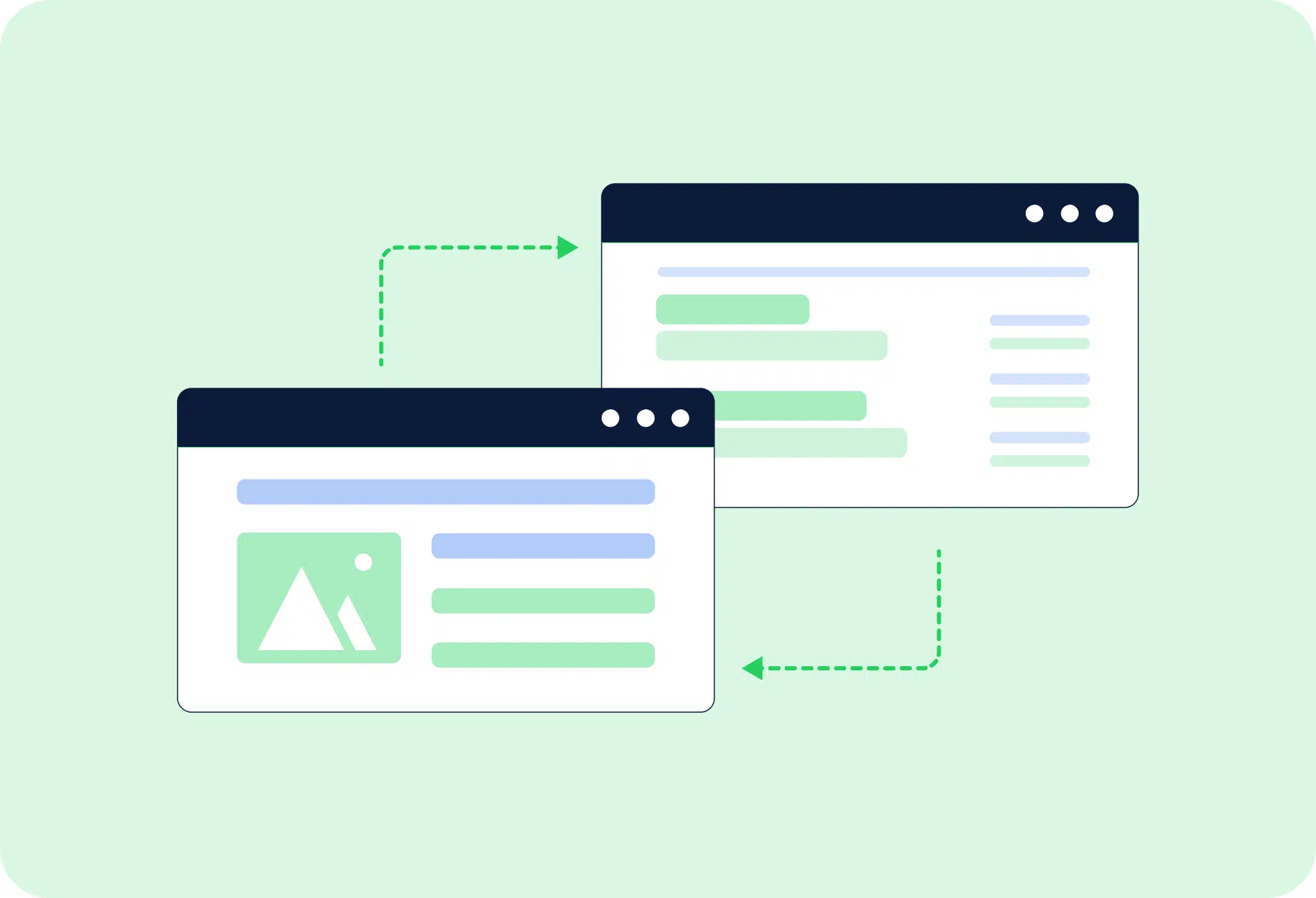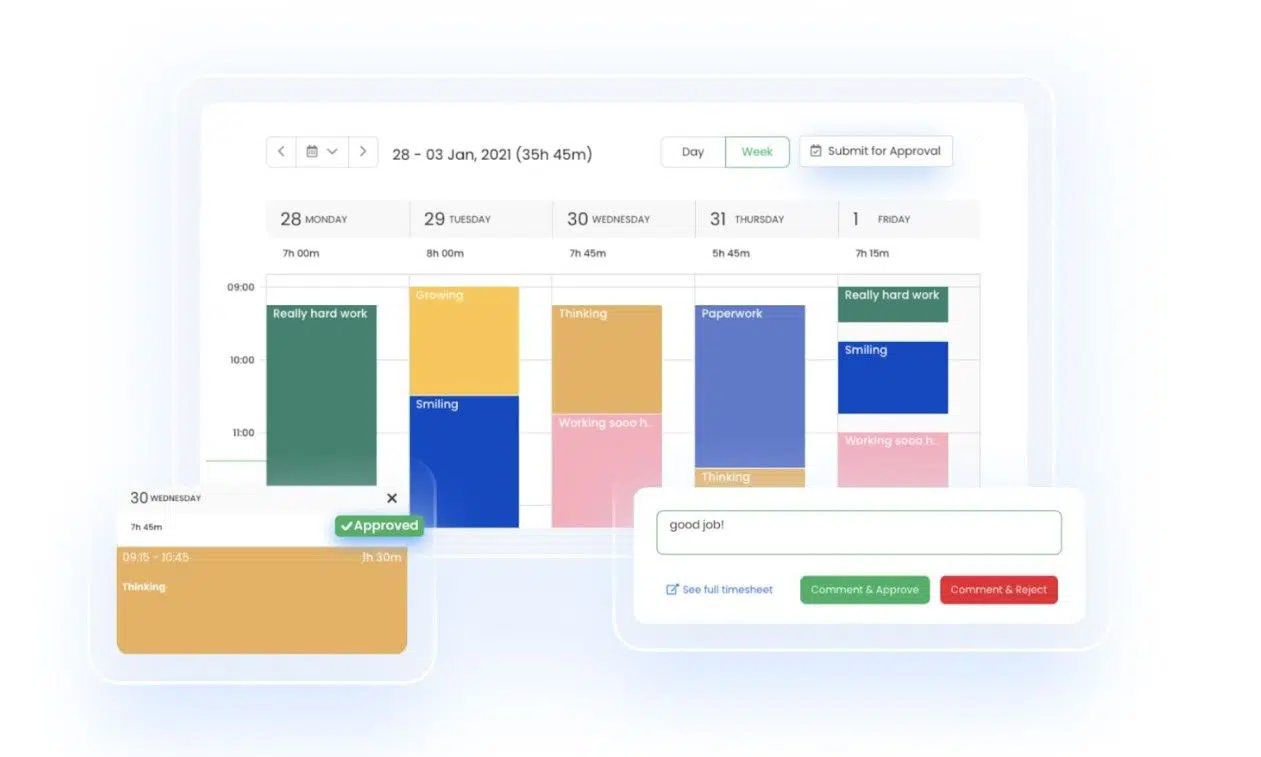What is the cost of context switching and how to reduce it?
-
Kat Ciesielska
- January 25, 2023
- 6 min read

Context switching (task switching) is natural to every human being. Most of us go through our days with a lot of mental switching. You need to focus on the task at hand, but you can’t avoid thinking about what’s coming up next. However, the problem is that context switching has a cost: it takes time and effort to change from one task to another. In this article, I’ll explain what context switching is and why it happens so much — then give some tips for reducing the cost of this time-wasting habit!
What is context switching?
Context switching, or task switching, meaning is easy to understand. It happens when you switch from one task to another. It’s a natural part of multitasking and can happen at any time. For example, if you’re writing an email while watching TV and your phone rings—that’s a context switch!
Check our article with Top 11 Most Common Time Management Mistakes!
Before we applied this term to human beings, it was all about switching tasks by computers. At the beginning, it was extremely difficult for CPU to switch from one process to another (not to mention multiple processes). The operating system struggled while trying to do so, which incurred context switch cost.
Get to know where your time goes with TimeCamp!
Track time in projects and tasks, create reports, and bill your clients in just one tool.
The cost of task switching uses your working memory. It depends on how much time it takes for your brain to get back into the right groove for whatever activity you were doing before the interruption occurred. The longer it takes for that process to happen, the more costly (and inefficient) it will be for your productivity.

How does task switching happen?
Context switches are the act of changing from one task to another. This can be done manually or automatically, and both types of context switching are important to understand.
The former is manual context switching: a person makes a conscious decision to switch tasks and then actively performs the steps necessary to make it happen. This could mean moving away from an email you’re writing in Gmail and opening up another browser tab with your word-processing software, or it could mean leaving Slack open while you put on headphones and listen to music on Spotify.
Manual context switching is useful for when you need something specific out of another app—if I want to print off something from my email, for example, or if I have some ideas about what should go into my next blog post that I don’t want lost in Slack messages (as has happened many times).
But as we do this more often over time, we pay a cost: not only does switching apps use up our computer resources by creating processes that need cleaning up later (more on this below), but we also end up taking longer overall because each time we switch gears our brain needs time to refocus on what we were doing before the interruption (and sometimes even afterwards). Especially if you switch between hardly different tasks.
While there aren’t any definitive studies about whether frequent context switching can cause stress like burnout does in some cases (or lead towards other unhealthy behaviors like smoking), there is evidence showing that increased mental activity increases cortisol levels—the hormone released during stressful situations—which suggests that regular stressful events are likely also taxing on your body even if they’re not causing noticeable symptoms yet.
Automatic context can decrease your productivity and drain you from energy. It can happen when you subconsciously switch to Slack messages as fast as you see the push-up, checking your phone when you hear the ring or switching to Facebook.
This kind of switching has definitely a negative impact. It uses your productive time and kills your attention span. It’s something you want to avoid if you wish to stay focused. If you feel like you have trouble keeping focused work, consider making an ADHD tests for adults.
If you already know that you have ADHD, check our article about ADHD time management and prove yourself that you can get things done.
The cost of context switches
Context switching has a cost that affects your productivity. That cost depends on several factors:
- How often you switch contexts. The more often you do it, the higher the overall cost will be;
- How long it takes to switch contexts. In an ideal world, you could instantly switch similar tasks without any interruption in performance or productivity. In reality, however, each context-switch involves some sort of pause or delay before you’re able to get back into a new task fully focused (and this can be longer in some cases than others). This is one reason why we strongly recommend getting into good habits when working with multiple windows open at once—it helps reduce the number of times your brain needs to make those transitions between tasks!
- How long you’re distracted by each new task as opposed to focusing on what needs doing at hand at this moment. When there are distractions around us—like our inbox full of emails or Facebook notifications popping up on our browser—they can pull our attention away from what needs doing right now so much faster than if we weren’t interrupted by these things all day long!
Why do we context switch so much?
Context switching is a natural part of life. We do it to make the most of our time, and we also do it because we have this need to be in control of our lives.
Your brain can only focus on one thing at a time, so when you switch even between similar tasks or activities, that leaves your mind temporarily distracted from whatever else it was focused on—and your brain needs time to recover from its previous mode before focusing again.
You might experience this as an interruption in productivity or even just an inability to concentrate fully on what you’re doing (like when someone asks you a question mid-task).
But context switching isn’t all bad news; it helps us improve ourselves and grow as people by providing new opportunities for learning and growth. For example: If you’re studying for a test but don’t understand something in the material, then maybe later while cooking dinner two hours later (which has nothing whatsoever to do with studying), some aspect of cooking will trigger your memory about what was confusing earlier in the day!
Context switching can be an expensive waste of time.
Context switching is the process of stopping one task and starting another. It means that context switching can be an expensive waste of time because it takes time to get back into the flow of a new task, and because it costs you precious mental energy.
Every time you stop the deep work, you lose something. Including money. Especially if you try to carry on with multiple projects.
According to psychology professor Dr. Jane Burka, “contextualizing requires more effort than simply remembering.” This means that context-switching requires more brainpower than continuous focus on one thing at a time—and over time, this adds up to real costs in terms of productivity and happiness (not to mention health).
How to reduce the cost of context switching
There are a few ways you can reduce context switching. Some of the things you need to make, or at least make them less frequent
1. Use a task manager to keep track of what you’re doing. Especially if your job involves multiple tasks. Try TimeCamp. Organize your work into projects and sub-tasks, but not only.
This way, when it’s time to switch from one project to another (or from one client’s needs to another’s), it will be much easier for you because each project or client is listed in its own section on the program’s interface.
But what’s more important, TimeCamp automatically detects what you’re currently doing. There is no way to miss any context switching. After analyzing the data, you will see when you stay focused, how do your regular breaks look like, and how productive you are throughout the day.
TimeCamp will show you your real productive time, how fast you finish specific tasks, and how do you use your energy at work.

banner
2. Use techniques like Pomodoro, so that instead of switching between tasks too many times throughout the day, take planned breaks between them instead. Don’t mix different tasks with each other, give yourself time to finish what you planned, focus on the present moment. Become productive!
3. Close communication apps – really. Sounds like a big deal, right? Ok, then mute them and set-up “busy” mode. Once you finish your project (or different tasks), check your Slack, TimeCamp Planner or Rocket Chat. You will find out that the world is still there and nothing blew up while you were unavailable. And you’ve just avoided context switching 😉
Conclusion
You know what’s called context switching and why. The more you can reduce the cost of context switching, the more productive your team will be. It is not just about saving time, but also about improving the quality of work and reducing errors. The best way to do this is if you avoid context switching in favor of a single task at hand. TimeCamp is a perfect tool for every modern workplace to help with that.


